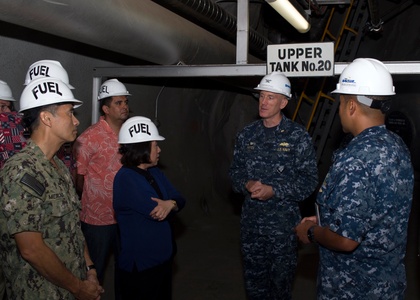Air Force Investigation Reveals Errors in Emergency Landing of F-15 Fighter Jet
Pilot errors and maintenance oversights led to an F-15 crash in Oregon, Air Force investigation finds.
.jpg) KC-135 AR F15s (U.S. Air Force photo by Staff Sgt. Ashley Sokolov)
KC-135 AR F15s (U.S. Air Force photo by Staff Sgt. Ashley Sokolov)An Air Force investigation into the emergency landing of an F-15 fighter jet in Oregon in May 2023 has found that two split-second errors by the experienced pilot led to the crash, despite commendable efforts to safely land the aircraft after a mid-flight hydraulics failure. The investigation determined that the pilot, described as a senior F-15 instructor with over 3,000 flight hours, made critical mistakes during the landing, including a miscommunication over the radio and a decision not to engage the emergency braking system, resulting in the destruction of the $35.5 million jet.
According to the Accident Investigation Board report released this week, the pilot effectively managed the hydraulics failure while airborne and formulated a plan to safely land the aircraft at Kingsley Field near Klamath Falls, Oregon. However, upon landing, the pilot failed to engage the F-15’s Emergency Brake/Steer System as prescribed by checklist guidance, leading to the mishap.
Additionally, a miscommunication with the control tower caused the plane to miss a last-ditch arresting cable that could have halted its momentum. The report highlighted a misunderstanding stemming from the pilot's radio call of "cable" instead of the Air Force-approved three repetitions of the word, leading air traffic controllers to lower the cable, inadvertently exacerbating the situation.
The investigation also faulted maintenance personnel for failing to properly inspect the fighter before takeoff, neglecting to detect a critical crack in the hydraulic system. Despite signs of hydraulic fluid inside the maintenance doors, the system was declared airworthy, contributing to the subsequent mid-flight emergency.
The pilot, recognizing the inadequacy of the plane's brakes, opted against a "go-around" maneuver and instead continued with emergency landing procedures. However, the decision not to use the emergency braking system, coupled with the missed opportunity to engage the arresting cable and the miscommunication with the control tower, culminated in the crash.
The pilot sustained non-life-threatening injuries and was treated after the aircraft came to a stop in a drainage ditch at the end of the runway. The investigation underscores the importance of adherence to prescribed procedures and effective communication in mitigating risks during emergency situations.







Conversation